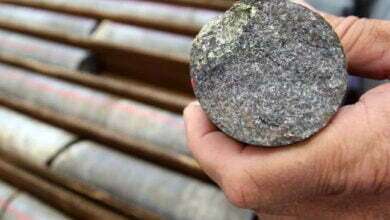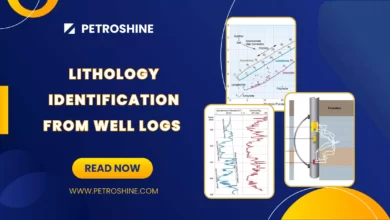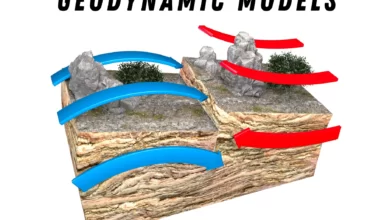Basin Histories and Properties
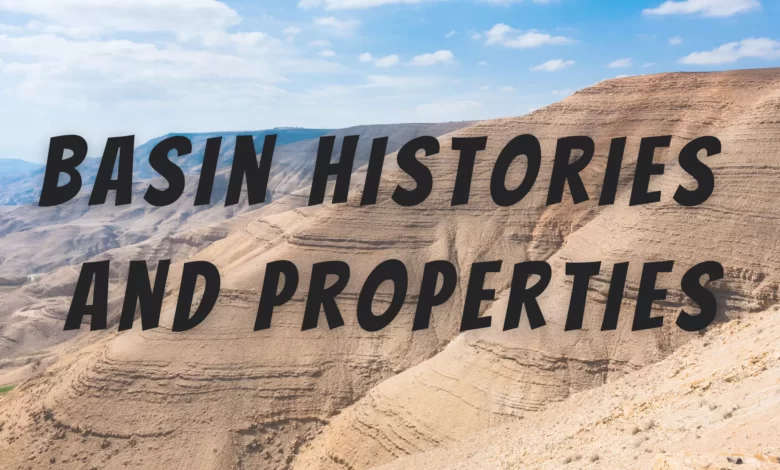
Basin histories and properties are the geological characteristics and evolutionary processes that shape sedimentary basins. Understanding the history and properties of a basin is important for predicting the distribution and quality of hydrocarbon reservoirs and for developing exploration and production strategies.
Time and Events in Basin History
Even though it is often incomplete and difficult to discern, the stratigraphic record contains the only available information about the timing and locations of geological events in the evolution of a basin. So, in order to establish a time framework, we must extract relative and absolute age information from strata.
These statements may seem counterintuitive. However, regardless of the methods and goals of a basin analysis, whether we are concerned with climatic and paleogeographic aspects of deposition, tectonic and structural events, thermal and maturation history, or diagenesis and petroleum migration, strata contain the record of these events in a temporal and spatial framework. For example, consider the requirements of structural analysis that, at first glance, may seem unrelated to stratigraphic analysis. To construct any type of structural or isopach map, or to identify the position and type of a fault, we must first identify time-correlative surfaces and strata. Clearly, correlating strata is essential to basin analysis.
We use many methods to extract time information from strata. Fossils and fossil assemblages are the most commonly used tools for establishing a biostratigraphic correlation. We can also calibrate biostratigraphic divisions of the geological time scale with absolute geochronologic ages using techniques that analyze mineral species. Since the 1960s, isotopic age-dating techniques of primary grains, cements and authigenic minerals have been increasingly important sources of information about absolute ages of source materials, deposition, and diagenetic changes in strata. Other methods — for example, fission-track dating used since the 1970s, and thermoluminescence and electron spin resonance used since the 1980s — have also been used to determine the ages and histories of different components of strata. Magnetostratigraphy, the analysis of ages of polarity reversals of Earth’s magnetic field, has become a common method for developing a high-resolution time framework, and is especially important in strata that lack fossils. Ocean floor magnetic reversals are effective in dating the formation of the ocean floor, and for determining the ages of continental rifting.
Until the increased interest in sequence stratigraphy in the 1980s, however, relatively little attention was given to calibrating lithostratigraphic units to absolute ages of the geological time scale. This oversight contrasts starkly with two substantive, but largely neglected, merits of physical stratigraphy in basin analysis. First, lithostratigraphic information is the most complete, accessible and commonly available data type of any used in basin analysis; it is inexpensive and can be used by geoscientists without special training or equipment. Second, we can use physical stratigraphy to establish chronostratigraphic correlations with a temporal resolution that is generally greater than that we could achieve using biostratigraphy alone. Dividing stratigraphic successions into unconformity-bounded or tectonostratigraphic units is often the most natural division of sedimentary basins and the most logical choice for selecting mapping horizons.
Walther’s Law of Facies Successions
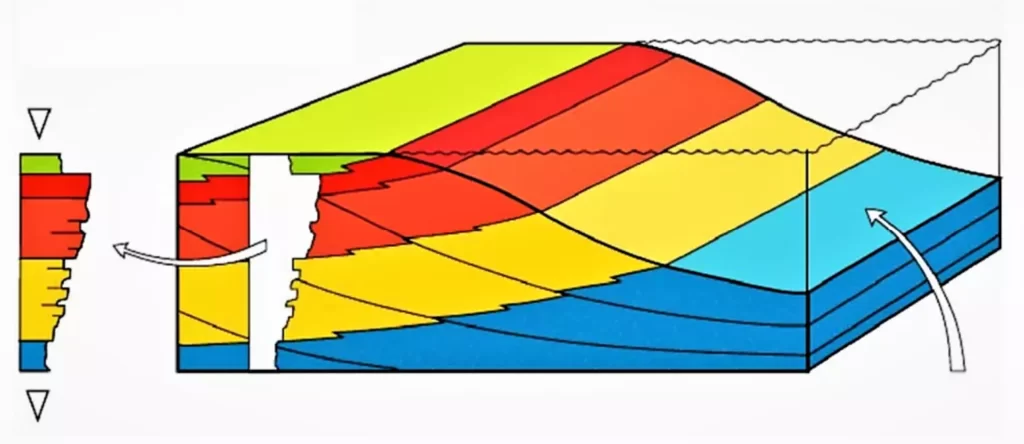
Walther’s Law of Facies Successions Figure 1, expresses the relationships that must exist between a vertical succession of facies observed in the stratigraphic record and the contemporaneous, laterally connected, depositional environments through time. In this respect, Walther’s Law states which facies can succeed each other in time and space, and which can not. Only those geomorphological environments that existed side-by-side along a depositional profile can leave their imprint as the sediments of a continuous stratigraphic record. The vertical succession of facies at a particular geographic location is the same as the lateral succession of geomorphological environments along a single depositional profile, as if the sediments within the laterally linked environments were turned vertically on end to form a succession of strata. This traditional way of discussing Walther’s Law emphasizes the lateral connections of depositional environments and the sedimentary facies successions they produce, rather than time relationships among facies and the continuity or discontinuity of vertical facies successions.
Alternatively, we can consider Walther’s Law as an extension of, or a special case of, Steno’s Law of Superposition, which states that sediment can be added to depositional surfaces in only one way — from the top. Time equivalents of multiple facies that compose a vertical succession must have existed along a series of depositional profiles, each superimposed upon the previous one. Thus, older facies are replaced by younger facies in the vertical succession as sediments along successive depositional profiles are added incrementally to successive depositional surfaces. Through time, as facies succeed one another vertically, the more distant geomorphological environments along the depositional profiles move toward the reference site of the vertical profile. Thus, Walther’s Law not only describes which facies can succeed each other laterally and vertically, but dictates the temporal relationships that must exist in any lateral or vertical succession of facies.
Walther’s Law is the fundamental concept for dividing stratigraphic successions into natural divisions of time-bounded stratigraphic units. In analyzing well logs and cores, we must pick the Walther’s Law divisions, represented by progradational/aggradational units, within stratigraphic successions. These time units form the basis for making high-resolution correlations, for establishing geometric stacking patterns, and for dividing the stratigraphic record into large-scale, unconformity-bounded depositional sequences.
In some environments, for example shelf-slope breaks, submarine fans, and delta fronts, the inclination of the depositional surface is so pronounced that we can notice it by eye. In most other environments, we measure the inclination of the depositional surface in tenths to thousandths of a degree, and we can visualize this inclination only on a map or on a vertically exaggerated cross section. Whether the inclination angle is large or small, virtually all environments possess some depositional topography, given that they occur on a sloping surface that descends from mountains to ocean basins.
If the depositional surface is inclined, layers of sediment accumulating parallel to that surface prograde, and facies climb seaward through time. On the scale of sedimentary basins, the Law of Superposition requires that virtually all sediments accumulate by progradation. If the depositional surface is horizontal, then sediments accumulating parallel with that surface aggrade, and facies climb vertically through time.
We can recognize episodes of progradation and aggradation as co-eval and as different manifestations of identical processes by viewing the geometry of strata in a foreshortened perspective. We do this using squeeze plots of reflection seismic profiles, or by constructing regional stratigraphic cross sections with considerable vertical exaggeration. In this foreshortened perspective, beds and other time surfaces that would appear horizontal over distances of tens to hundreds of kilometers in normal plots will now appear inclined. The geometries along time surfaces also change in these perspectives; for example, a zone of high aggradation changes into a zone of limited progradation, and a zone of limited aggradation changes into a zone of pronounced progradation.


